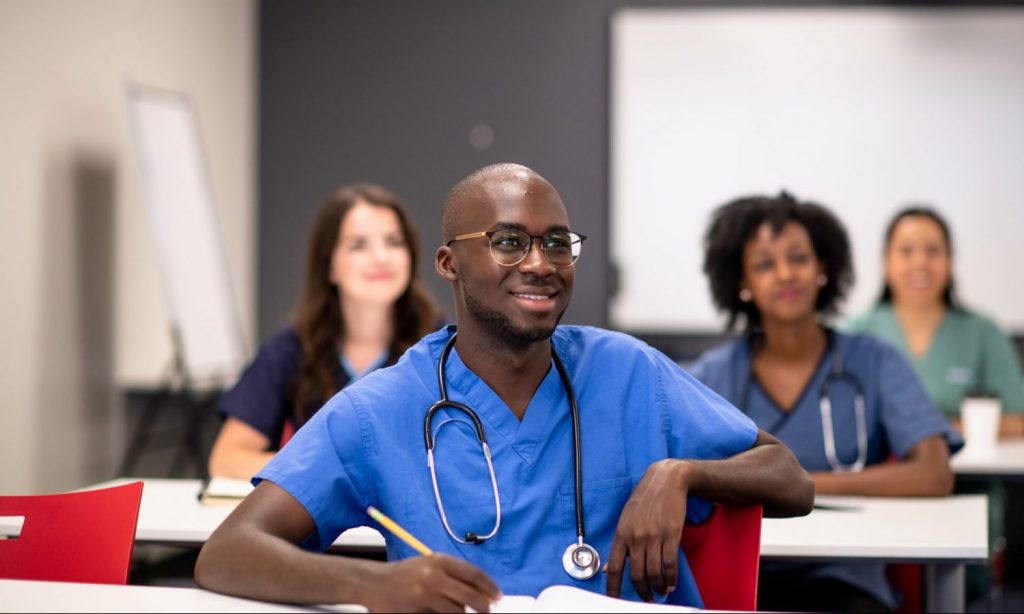Recruiting diverse students is only part of the goal. Schools must intentionally create inclusive learner-focused and empowering environments to assist underrepresented in medicine (URM) students feel at home and to thrive.
In hindsight, 2020 is appearing to be a pivotal time in medical education. Last year saw the emergence of: the SARS-2 COVID-19 pandemic, social upheavals, the decision by the National Board for Medical Examiners (NBME) to make the United States Medical Licensing Examination (USMLE) Step 1 examination pass/fail, increased numbers of applications to medical schools especially from racial and ethnic groups underrepresented in medicine (URM), and the increasing recognition by so many well-meaning people in medicine and healthcare of the importance of diversifying our medical school classes. All of these developments make now the best time to make our admissions actions match the rhetoric.
There are many documented benefits of diversity in medicine. For one, Black patients and Black babies have better health outcomes when their physicians are Black.

URM students add important benefits to medical school classes and these have been widely published. URM students are more likely to return to medically underserved communities to practice. They have a better understanding of and compassion for the issues their future patients face for they come from the communities they will serve. URM students bring their unique perspectives, life stories, and grit to the medical school classes they join and, thus, enhance the academic experience of their medical school classes. These URM students help their classmates learn about their diverse cultures and help their classmates become comfortable and familiar with cultural mores different from theirs. In so doing, URM students help improve the cultural competency of the entire class.
The importance of diversity extends to patient care outcomes. Minority patients have a higher acceptance of — and trust in — their physicians who are of the same race and ethnicity leading to positive health outcomes for them. With the ongoing COVID-19 pandemic, these URM physicians are, indeed, the lifeline for their under-resourced minority patients.
The proliferation of diversity, equity, and inclusion (DEI) officers recently appointed at most organizations is evidence that academic medical centers recognize the importance of diversifying the physician workforce. Many medical specialties have followed suit and established DEI committees to help recruit URM students to their programs. For many years now, many schools and organizations seem to agree to diversify their medical school classes and residency programs, but the outcomes vary and have not shown a significant increase in the numbers of URM candidates selected. For example, for the 2020 allopathic medical school entering classes, only 1,767 of the 22,197 matriculants identified as Black or African American. In 2018, only 5.0% of active physicians identified as Black or African American compared to 13.4% of the 2019 United States population who identify as Black or African American.
The role of pipeline programs:
To increase the number of competitive URM applicants to medical school, medical schools must establish effective pipeline programs:
- They should recruit URM young people from the communities surrounding their schools and hospitals and beyond
- Expose them to the STEM fields, provide academic enhancements, mentorship, and professional guidance
- Provide necessary resources, inclusive and affirming learning environments, and effective role models. Many URM students are first generation college students whose parents are not knowledgeable about the ins and outs of higher education to guide their academic pursuits and many attend low resourced schools
- Provide general instruction in critical/analytical reasoning skills, tutoring in foundational concepts in STEM disciplines, preparation for the MCAT, and opportunities to be mentored by physicians
Diversity is an accreditation requirement:
Diversity of medical school classes is such an important outcome that the Liaison Committee on Medical Education which accredits all allopathic medical schools in the United States and Canada included this as an accreditation requirement, standard 3.3. Many schools work to increase the numbers of URM students in their classes as a result. Some schools have made some significant strides. However, the pace of diversification is slow, and many schools go after the same small cohort of URM applicants who possess competitive Medical College Admissions Tests (MCAT) and science grade point averages (GPA). Unfortunately, many medical schools use both the MCAT and GPA, in large part, to select their entering classes. These two metrics are therefore seen as the “gate keepers”, limiting URM applicants’ chances of matriculating at medical schools.

MCAT scores do not predict the quality of medical care an applicant will end up providing to their patients following their training. MCAT scores do not predict one’s ability to work effectively in teams or predict the level of advocacy a medical student, resident, or practicing physician will have for their patients or their service to vulnerable communities. Lastly, MCAT scores do not predict empathy. Yet, some schools base their selection mainly on applicants with stellar scores. MCAT scores predict performance on standardized exams. MCAT scores are a range and seem to have a “threshold effect”. Many medical schools have been able to recruit students with “modest” MCAT scores (middle range scores) and have posted excellent student outcomes. Schools need to move away from this heavy reliance on the MCAT score.
Holistic review:
Medical schools should utilize the holistic review framework in their applicant selection:
- Balancing each applicant’s personal attributes, experiences, and academics
- Each school has its unique mission and should aim to recruit broadly qualified students who embody their mission and who will serve the increasingly diverse nation in a culturally adept manner
- MCAT and GPA should be used as a part of this holistic review
- Take into consideration each applicant’s life story, background, personal attributes, demonstrated service orientation, motivations for a career as a physician and desire to train at their medical school
Inclusive and affirming learner environment:
Recruiting diverse students is only part of the goal. Schools must intentionally create inclusive learner-focused and empowering environments to assist URM students feel at home and to thrive. Recruiting and retaining URM staff, faculty, and administration are equally important in helping URM students develop this sense of belonging which will increase their chance of flourishing.
Morehouse School of Medicine has been able to achieve these outcomes. The school embodies diversity at all levels, uses holism in its medical school applicant selection, creates a nurturing and welcoming learning environment, and has demonstrated successful outcomes for her students regardless of their socio-demographic descriptors and entering academic metrics.
Ngozi Anachebe is the Sr. Associate Dean, Admissions & Student Affairs at Morehouse School of Medicine.


